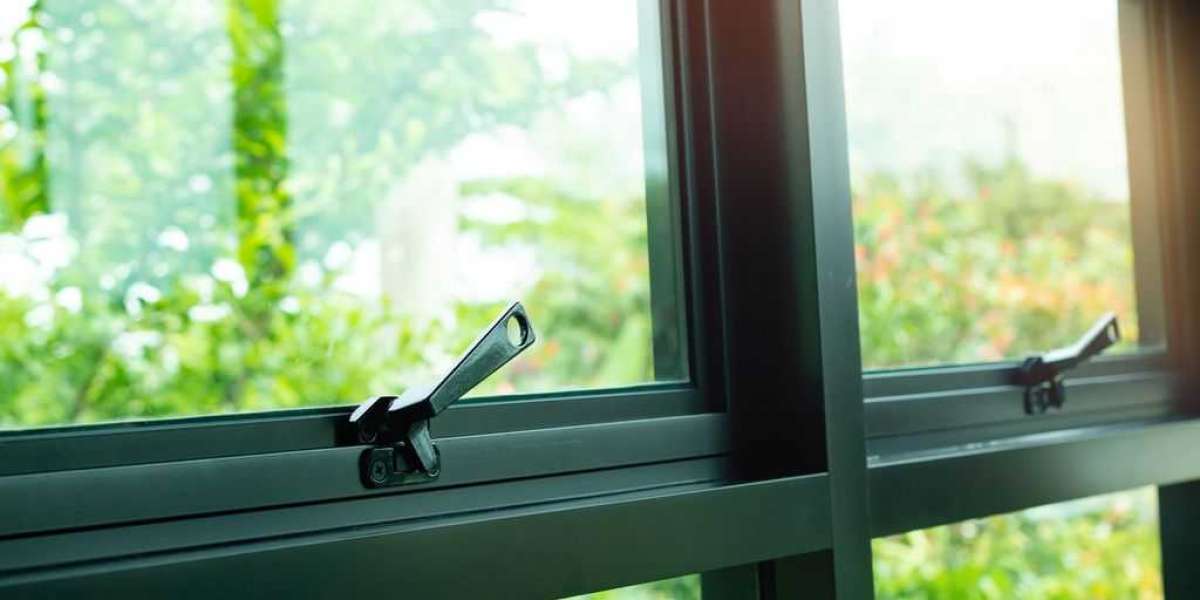But as vital as windows themselves are, the often-overlooked component that makes them functional, the window handle, has undergone a fascinating journey of evolution.
From simple latches on wooden shutters to sleek, ergonomic mechanisms in modern smart homes, window handles have transformed in design, function, and materials, reflecting broader changes in architecture, technology, and lifestyle.
Early Beginnings: The Humble Shutter Latch
Before glass panes became common in domestic architecture, windows were essentially openings covered by wooden shutters. In medieval Europe, these shutters were secured with rudimentary iron latches or wooden bars. The purpose was primarily practical, keeping out the elements and securing the home. Handles, in the sense of a graspable device, were crude iron pieces shaped by blacksmiths. Their design was utilitarian, with little attention paid to comfort or aesthetics.
The earliest window “handles” were less about smooth operation and more about durability. Forged iron was strong, resistant to tampering, and lasted for generations, though it was often uncomfortable to use, especially in cold climates where the metal would chill to the touch.
The Renaissance and Baroque Influence: Beauty Meets Function
As glassmaking improved in the 16th and 17th centuries, glazed windows became increasingly common among the wealthy. With this came the need for more refined hardware. Window handles began to adopt decorative qualities, often cast in brass or wrought iron with intricate scrollwork, floral motifs, and other embellishments inspired by Renaissance and Baroque art.
Handles were no longer purely practical; they became small works of art. These designs reflected the social status of the homeowner, with elaborate hardware serving as symbols of wealth and taste. The functionality remained straightforward, but ornamentation became a priority, marking the first era in which aesthetics shaped window design.
The Industrial Revolution: Standardization and Mass Production
The 18th and 19th centuries brought monumental change with the Industrial Revolution. Advances in manufacturing allowed for the mass production of window hardware. For the first time, handles were standardized, affordable, and available to the growing middle class.
Cast iron and brass dominated the era, offering strength and affordability. Designs shifted from ornate flourishes to more practical, streamlined forms. Sash windows became widespread, especially in Britain, and this introduced the classic sash lift—small recessed handles or lifts that allowed the user to raise and lower the sash with ease.
This era also marked the beginning of greater attention to ergonomics. Handles were shaped to be grasped comfortably, though the design still leaned toward simplicity and efficiency rather than luxury.
The Victorian Era: Ornamentation Returns
While the Industrial Revolution encouraged utilitarian design, the Victorian era reintroduced a love for decorative hardware. Window of the late 19th century often featured embossed patterns, floral engravings, and ornate escutcheons. Brass, polished to a warm sheen, was a popular choice for both functionality and beauty.
Victorian architecture emphasized detail in every aspect of the home, and window hardware was no exception. Yet beneath the ornamentation, functionality continued to improve. Casement windows became more common, requiring handles with cranks or latches for easier operation.
Early 20th Century: The Rise of Modernism
The early 20th century brought sweeping changes in design philosophy. Influenced by the Bauhaus movement and modernist architecture, simplicity and functionality began to dominate. Ornamentation was stripped away in favor of clean lines and geometric shapes. handles followed suit.
Steel and aluminum began replacing brass and iron as industrial materials advanced. Handle designs became sleeker, often reduced to simple levers, knobs, or cranks. The emphasis was on efficiency, ease of use, and integration with the minimalist aesthetics of modernist homes and skyscrapers.
This was also the period when safety and ventilation became more carefully considered. Multi-point locking mechanisms began to appear in Europe, particularly in Germany, introducing handles that could tilt and turn, allowing windows to both swing open and tilt inward for ventilation—a design still widely used today.
Mid-20th Century: Innovation in Materials and Styles
The mid-1900s saw the introduction of plastics and other synthetic materials in manufacturing. Window handles were no exception. Bakelite and later ABS plastics allowed for the mass production of affordable, lightweight, and colorful handles.
At the same time, architectural styles diversified. The post-war boom in suburban housing favored practicality and affordability, while high-modernist architects experimented with large glass façades, requiring new hardware solutions. Aluminum-framed windows became standard in many homes, paired with simple lever or latch handles.
Designers also began to focus more seriously on ergonomics. Curved handles, textured grips, and smoother mechanisms made windows easier and safer to operate.
Late 20th Century: Toward Ergonomics and Security
By the latter half of the 20th century, two priorities reshaped handle design: user comfort and security. Rising urbanization and concerns about burglary led to more sophisticated locking systems. Handles were now often integrated with multi-point locks, requiring only a simple turn of the handle to engage several locking points along the window frame.
Ergonomic research influenced handle shapes, leading to contoured designs that fit naturally in the hand. The popularity of PVC and uPVC windows, particularly in Europe and North America, standardized a new generation of simple yet highly functional white plastic handles with internal locking features.
While not always celebrated for their aesthetics, these designs embodied practicality and mass accessibility.
The 21st Century: Design Meets Technology
In recent decades, handle design has continued to evolve with advances in architecture and smart technology. Minimalism remains a dominant trend, with slim, unobtrusive handles blending seamlessly into window frames. Materials like brushed aluminum, stainless steel, and high-strength composites are popular for their durability and aesthetic appeal.
Ergonomics has reached new heights, with handles designed to be operable by people of all ages and abilities, including those with limited mobility. Child safety locks and intuitive locking indicators are now commonplace.
Perhaps the most significant development, however, has been the integration of technology. Smart window handles with built-in sensors can now detect whether a window is open, closed, or locked, transmitting this information to home automation systems. Some even allow remote locking via smartphone apps, enhancing both convenience and security.
Cultural and Regional Variations
While global trends have influenced handle design, regional preferences persist. In Europe, tilt-and-turn handles remain ubiquitous, while in North America, sliding windows with recessed pulls are common. In Asia, especially in high-density cities, compact designs that maximize space are favored. These variations highlight how cultural practices, architectural traditions, and climate influence even the smallest components of home design.
Looking Ahead: The Future of Handles
As architecture continues to evolve, so too will the humble handle. Sustainability is likely to shape the next generation of designs, with eco-friendly materials, recyclable components, and energy-efficient locking systems that improve insulation.
Advances in smart technology may even eliminate the need for manual handles. Automated windows that open and close based on environmental sensors, measuring air quality, temperature, or occupancy, are already entering the market. Yet even in this high-tech future, the tactile satisfaction of a well-designed handle may endure as a timeless feature of human-centered design.
Conclusion
From medieval iron latches to sleek smart handles, the evolution of window handle design tells a story of changing technology, aesthetics, and human needs. Once an overlooked necessity, the handle has become an intersection of design, security, and innovation. As homes grow smarter and sustainability becomes a priority, handles will continue to adapt, embodying the ongoing dialogue between form, function, and the human touch.








